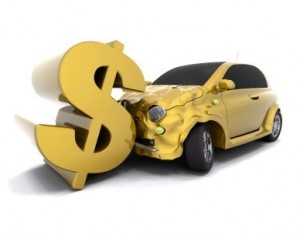It really is possible to save hundreds of dollars a year on auto insurance. All you need to do is find the car insurance company that has the best rates for you. The most effective way to find your perfect auto insurance company is to compare auto insurance rates.
You can find the lowest car insurance rates by inserting your ZIP code in the FREE box on this page!
There are many reasons why you should compare auto insurance rates. It is a relatively simple process, but there are a few aspects to which you should pay close attention. Also, understanding where to compare insurance rates is as almost as important as the comparison process itself.
Make Sure to Use the Same Information
One aspect that you need to keep tabs on is the information that you use when you get rate quotes. The Maine Bureau of Insurance maintains that the only way to get a fair comparison on rates is by using the same information with each company. If you give different information, then the quotes will not really be comparing the same level of coverage.
When you buy auto insurance, you tell the insurance company how much coverage you want.
The cheapest and lowest amount of coverage is your state’s minimum level of mandatory insurance. Mandatory insurance generally includes bodily liability and property damage liability; and possible coverage such as uninsured/underinsured motorist coverage and personal injury protection.
Each state has its own minimum levels of mandatory insurance. You can verify necessary levels of mandatory coverage at your state’s Department of Insurance by checking the map provided by the National Association of Insurance Commissioners.
Minimum quantities of coverage can range in amounts from $10,000 to $50,000 for every person and $20,000 to $100,000 for the entire accident for bodily liability. This coverage pays for the cost of the medical bills of those you injure in an accident.
Property liability minimum amounts range from $5,000 to $25,000 between different states. This coverage pays for damages to other drivers’ vehicles that you cause in an accident and damages to other property such as fences, buildings, and light poles.
Uninsured/underinsured motorist coverage provides payment to you for damages you suffered from another driver, but only when that driver does not have sufficient coverage to pay for all of your damages. Lastly, personal injury protection covers your medical bills in an accident.
Most experts agree that only buying the least amount of car insurance is not a wise move.
It may not be enough to pay for your liability in an accident. Furthermore, you should also know how much optional coverage you want. Collision and comprehensive coverage pay for damages to your car from an accident, theft, or other loss. Generally, if your car is older and has depreciated greatly in value, then you can likely skip on optional coverage. However, if your vehicle is still worth a great deal, then you put yourself at great financial risk if you don’t carry optional coverage on your vehicle.
Generally, if your car is older and has depreciated greatly in value, then you can likely skip on optional coverage. However, if your vehicle is still worth a great deal, then you put yourself at great financial risk if you don’t carry optional coverage on your vehicle.
If you don’t have collision or comprehensive, then the costs of damages from an accident or loss from a theft or other incident will have to be borne by you alone. Incidentally, most lenders require you to carry optional coverage as long as you still owe on your loan. This is to protect their investment, since the car is still technically owned by them.
Compare to Save Money
If you feel like you are paying too much for your insurance coverage, then comparing rates will let you know if you are overpaying or getting a fair deal. While the major car insurance companies claim hundreds of dollars of savings if you switch to their policies, there is the possibility of saving a great deal of money with any insurer.
Rates vary greatly from insurer to insurer, so you might find a lower rate with a smaller insurance company that uses different advertising methods. You won’t know which company has the best rates for you until you compare quotes.
As a case in point, the Massachusetts Division of Insurance hosts a comparison tool for drivers in the state. The comparison tool has seven different driver profiles that contain various drivers, levels of coverage, and numbers of cars. If you lived in Massachusetts, you would choose a driver profile and a comparable vehicle to your own, and then the comparison tool will give you the rates for coverage from more than 20 insurers.
For instance, one driver profile includes a married couple in their late 20s and early 30s who drive two vehicles–one vehicle is a 2008 and the other is a 2005 model. They have $35,000 for each individual and $80,000 per crash for bodily injury liability, plus $50,000 for property liability coverage. They also carry comprehensive coverage with a $500 deductible, but no collision coverage.
The comparison tool returns coverage rates for these two from more than 20 different insurers in the state of Massachusetts. The rates for insurance coverage range in price from $603 to $1,340 per year. If these drivers don’t compare quotes, they could be paying $737 more for the same coverage!
Comparing rates allows you to truly see all of the insurance premium price options available to you.
Obviously, those who have clean driving records will find the best rates from a comparison process, but every driver can benefit from comparing rates.
Compare for Leverage While Negotiating a Price
Comparing car insurance rates is not only useful when you are looking for a new insurance company. It can also be useful to negotiate a lower premium with your current auto insurer.
Switching car insurance companies may not be something you really care to do. You might feel that your company has excellent customer service or a very user-friendly website. Basically, you don’t want to lose the level of service to which you have become accustomed. However, you would certainly enjoy lower rates for the same coverage.
First, you need to compare auto insurance rates for the same coverage from other insurance companies. Just comparing rates will in no way affect your current coverage. If you can find lower rates from another insurance company, you can then let your current insurer know that you have found less expensive rates with another company.
All you need to do is call your current insurer, and explain what a valuable customer you have been and that you don’t really want to switch because you truly value their service. However, this other insurance company has offered you rates that are lower, and you were wondering if your current insurance company could match their quote. You may need to speak with a supervisor, but the worst thing that can happen is they say “no.”
More often than not, your current insurance company will match the quote. Your chances for premium matching increases the longer you have been with the company and as long as you always pay on time. If they refuse, you can either switch or keep your rate with your current insurance company.
Compare When Choosing a New Vehicle
 Comparing rates is also something you want to do when you are planning on buying a new vehicle, explain the experts at the Insurance Information Institute.
Comparing rates is also something you want to do when you are planning on buying a new vehicle, explain the experts at the Insurance Information Institute.
Each vehicle has different rates based on price, the cost of repairs, theft rates, the car’s overall safety rating, and statistics that show which cars are more likely to be in accidents. You need to know how much it will cost to insure a new vehicle before you buy it.
You may have a short list of cars that you are considering buying. Just as you would want to test drive each vehicle, you also want to check insurance rates for each car. You may be surprised by how much insurance costs for vehicles in the same class can vary. Comparing rates from different companies for various cars may very well be the deciding factor for which one you will buy.
Comparing rates can also assist you when you have a particular make and model in mind to purchase. Every vehicle is offered at various trim levels by its manufacturer. Some vehicle’s higher trim levels may have luxury amenities like leather seats, while others could have upgraded features such as bigger engines and overdrive.
Comparing rates for different trim levels for the same car will help you to decide if you can afford to insure just the basic model, a touring package, or the luxury series.
Why Rates Vary So Much
There really is a great disparity between quotes offered by different car insurance companies. You would think that rate quotes would be closer together. However, every car insurer has its own mix of driver risk that it feels is profitable.
For instance, some companies want a large amount of high-risk drivers who pay really high rates. Other companies may specialize in giving the safest drivers the best rates. Each company labels a driver’s risk differently.
When you apply for car insurance with a company, it takes all of your driver demographics and places you in a certain risk category. Depending on how the company determines the cutoffs for its risk categories, the risk category you are in will determine your rates.
For example, if you have only a few small bumps on your driving record, the company that deals in high-risk drivers may place you in a low-risk category. Then your rates are likely to be lower. However, the company that is only looking for the best drivers may place you in a high-risk category, and they will charge you a higher rate.
Auto insurance providers don’t release the formulas and computations they use to assess a driver’s risk. The best way to know how much an insurer will charge you for coverage is to get a quote.
